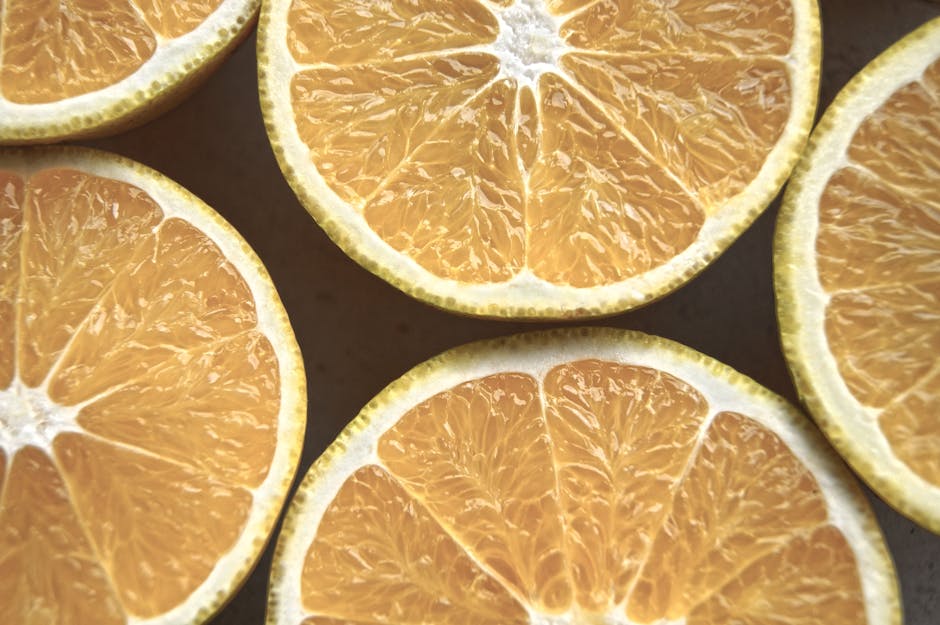Table of Contents
You know, folks always ask me, “What’s the one thing that actually makes a difference in your day, something simple, but it just works?” And I’ll tell ya, after two decades in this digital circus, wading through trends, gadgets, and promises, it’s rarely the big, shiny, “gotta have it” stuff. Most of that’s just noise, a marketing blip in the grand scheme. But then, every once in a while, something sticks. Something quietly changes your routine for the better. For me, that’s been the juicer. Yeah, a juicer. Sounds a bit, I don’t know, faddish, maybe? Like those health kicks that last a week and end with a pizza? But I’m telling you, it’s different.
I remember thinking, back in the day, juicers were for those super-healthy types with kale gardens and yoga mats glued to their feet. Not for me, the guy who practically lives on coffee and the faint scent of server racks. But a few years back, my mate from down in Sydney, big fella, always talking about his morning routine, he convinced me. Said his Hurom changed his whole morning. “No more sluggish starts, mate,” he’d boom over the phone. “Just pure, unadulterated goodness.” Sounded like bollocks, honestly. But he kept at it, sending me pictures of vibrant green concoctions. So I caved. Bought one, skeptical as a fox in a henhouse. And you know what? He wasn’t wrong. It wasn’t magic, not like that. But a good cold-press juicer? It’s a bit of a quiet miracle, or at least a damned solid investment in feeling less like a worn-out sock. The best juicer? That’s a journey, not a destination, really.
See, the market’s flooded now. Every brand wants to tell you theirs is the one. They promise you the moon, the stars, and a longer lifespan, probably. But you gotta cut through the marketing fluff. What do you actually need? Are you juicing half a carrot once a week, or are you trying to bottle sunshine every single morning? Your answer there, that changes everything.
Cold Press versus Centrifugal: The Real Lowdown
People get hung up on this, cold press, centrifugal, what’s the difference? It’s simple, really. Centrifugal, that’s the fast one. Whizzes everything around, spins it dry. Quick. Cheap, often. But it brings a lot of air into your juice, heats it up a touch, and you lose some of the good stuff quicker. Oxidation, they call it. Your juice starts to look sad and separated pretty fast. Fine if you’re gulping it down immediately, like right at that second.
Then you got cold press, or masticating. That’s the slow churner. Grinds and presses the fruit and veg slowly. Minimal heat, minimal air. Keeps more of the vitamins and enzymes, the stuff you’re actually buying the damn thing for. Your juice lasts longer in the fridge, tastes better. Pulp comes out drier, which means you’re getting more juice for your money. Now, which one’s the best juicer depends on your patience. And your wallet, obviously. Cold press usually costs more. Always does. The slow ones, they’re the ones I started leaning towards.
Hurom: The Quiet Achiever
My first real dive into the “best juicer” world was with a Hurom. Still got it, actually. Sat on the counter, doesn’t take up too much room, considering. These Korean companies, they do alright with appliances, don’t they? It’s sturdy. Doesn’t complain. Just sits there, quietly doing its job. I’ve put everything through that thing – carrots hard as rock, leafy greens that look like they belong in a compost heap, ginger root that fights back. It just chews through it.
What I like about the Hurom models, especially the slow juicers, is the motor. It hums, doesn’t scream like some jet engine taking off. That’s a big deal if you’re an early riser and don’t want to wake the whole house just to get your celery juice fix. Cleanup’s not a nightmare either. A few parts, quick rinse, maybe a brush for the filter screen. Not like trying to reassemble a small engine. I think I have the HZ model. It’s got that stainless steel look. Looks pretty good, I’ll grant them that. It’s never let me down, not once.
But is it worth the fuss, juicing all this stuff?
Look, I get it. Chopping up all that produce, then cleaning the machine. It feels like a chore sometimes. Especially when you’re staring at a mountain of kale and thinking about just grabbing a coffee. But here’s the thing: once you get into the rhythm, it becomes just another part of your morning. Like brushing your teeth. I used to think it was just a fad. That I’d use it for a week, then it would collect dust in the back of the cupboard. But honestly, it gets used. My body feels different. Not like a superhero or anything daft, but just… less creaky. More awake. It’s not a magic pill, nothing is, but it does help.
Omega Juicers: The Workhorse of the Kitchen
Then you’ve got Omega. These are often the ones you see in professional settings, or what people who are really serious about juicing often recommend. They’ve been around forever, it seems. My cousin, the one with the organic farm up in Northumberland, he swears by his Omega. Says it’s a brute, handles anything he throws at it. And he throws a lot. These machines are known for their masticating power. They’ve got models, like the J8006HDS or the MM900HDS, that specifically target celery juicing because that’s apparently a whole movement now.
Omega machines are built to last. They look like it, too. A bit more industrial than some of the sleek, curvy designs you see from others. But they grind out every last drop. Pulp comes out drier than a politician’s promise. If you’re serious about high yield, getting the absolute maximum out of your pricey organic produce, then an Omega is definitely one to consider for the best juicer. They usually come with a decent warranty too, which tells you they stand behind their product. That’s always a good sign.
What can you even put in these things?
Honestly, everything. Apples, carrots, oranges, celery, ginger, turmeric. leafy greens, spinach, kale, wheatgrass. Even things like cucumbers, bell peppers. Pears, berries. Some people even put herbs in there, like parsley or cilantro. It’s surprising what a bit of apple and ginger can do to make a load of green stuff taste… well, not bad. Sometimes even good. You just gotta experiment. Don’t be afraid to throw something in and see what happens. Worst case, you made a weird drink. Best case, you found your new favourite combo. I once tried juicing beetroot. Made the kitchen look like a crime scene. But the juice was good! Just, you know, wear an apron.
Nama Juicers: The New Kids on the Block (with a Punch)
Nama. Heard a lot about these lately. My graphic designer, young bloke, always on about the latest gear, he got one of the Nama J2 models. It’s different, alright. It’s got this huge hopper, you just drop whole fruits and veg in there. Don’t even need to chop everything up small. That’s a game-changer for someone like me who sometimes just wants to get it done without a whole lot of prep.
The Nama J2 is a vertical masticating juicer, similar in principle to the Huroms, but they’ve really leaned into the convenience aspect. You load it up, close the lid, and it just feeds itself. Now, I haven’t personally used one for a long stretch, but I’ve seen it in action. Pretty impressive. The juice quality looks spot on, and the pulp is dry. For busy people, or if you’re juicing for a family, that large feed chute is a massive bonus. Makes it a contender for the best juicer if time is your biggest hurdle.
Will it last? That’s the real question.
That’s always the kicker, isn’t it? Something comes out, everyone raves about it. But can it take a beating year after year? Some of these new machines, they’ve got clever features, but the guts of them, are they built like the old tanks? Time will tell with Nama, but the early signs look good. They’ve got a lot of buzz for a reason.
Kuvings: Reliable and Robust
Kuvings. Another Korean brand, like Hurom. And they’re solid. Really solid. They’ve got a bunch of models, vertical and horizontal. The Kuvings EVO820, for instance, it’s another one with a wide feed chute, which, again, saves you a heap of time on chopping. Just plonk in an apple, maybe a half orange, and away you go.
I’ve got a mate, lives out in the sticks, in Wales. He’s got an older Kuvings. Beat it senseless, he has. Uses it every single day, twice a day sometimes. It just keeps on chugging. Doesn’t complain. The build quality on these is usually top-notch. They feel weighty, not flimsy. That matters. When you’re pulling something out of the cupboard every morning, you want it to feel like it can handle it. Not like some cheap plastic toy. They also focus on the pulp outlet, making sure it’s easy to clean out. That’s a minor thing, but it stacks up over time. If you want a machine that’s gonna stand the test of time and give you consistent juice, Kuvings is a strong contender for the title of best juicer.
Breville: Speed Demons and affordable Entry
Now, if you’re after speed, or you’re just dipping your toe in the juicing water without wanting to spend a fortune, Breville is often the go-to. These are usually centrifugal juicers. They spin, they rip, they tear. Juice comes out fast. Like, really fast. You can make a glass of juice in about 30 seconds. That’s mighty appealing when you’re rushing out the door.
Models like the Breville Juice Fountain Cold are popular for a reason. They’re relatively inexpensive, widely available, and they get the job done quickly. The downside, as I mentioned with centrifugal machines, is the juice quality. It doesn’t last as long, and you might lose a little bit of the nutritional punch because of the heat and oxidation. But for convenience and price, they are hard to beat. If your primary goal is just getting some fresh juice into your diet without much fuss or financial outlay, a Breville could be the best juicer for you to start with. It’s a good entry point. You might upgrade later, or you might find it’s all you need. Different strokes, right?
Why do some people go on about the pulp?
That’s another thing people get obsessed with. “Pulp control!” they shout. Well, some people like a bit of pulp in their juice. Gives it body, they say. I like mine smooth. Like velvet. And a good cold press juicer, it gets the pulp out. Leaves it dry, like wood chips. That means you’re extracting more juice, more of the good stuff. If you like it pulpy, you can always filter it less, or even throw a bit of the pulp back in. It’s not rocket science. Pulp’s just fiber, good for you, but some people like their juice to be juice, not a smoothie. No wrong answers, really, just preference.
Is it really better than a blender?
Ah, the blender argument. Seen it a million times. It’s like asking if a spoon is better than a fork. They do different things, simple as that. A blender, that makes a smoothie. Keeps all the fiber. You’re drinking the whole fruit or vegetable, just in a different form. Which is great, absolutely. Smoothies are fantastic. But juice? Juice is concentrated. You’re getting the vitamins, minerals, and enzymes without all the fiber. So you can pack in a lot more nutrients in one go, without feeling stuffed. It gets into your system quicker. Good for when you want a nutrient hit.
When I’m feeling a bit run down, a juice just seems to hit different. A smoothie fills you up. A juice makes you feel lighter, more energized. It’s a different experience, a different kind of kick. So, no, one isn’t “better” than the other. They’re different tools for different jobs.
So, the best juicer then? Which one is it?
Alright, alright. The million-dollar question, isn’t it? The one people always want a straight answer to, but life’s never that simple, is it? The truth is, there isn’t one single “best juicer” for everyone. It’s like picking the best car. Depends on what you need it for.
For me, someone who’s done this a while, who wants something that’s built well, gets a good yield, and doesn’t make the kitchen sound like a construction site at 6 AM, I lean hard on the masticating, cold-press machines. Hurom, Omega, Nama, Kuvings – you can’t really go wrong with any of them if you pick the right model for your budget and specific needs. They’re the ones that feel like a proper appliance, like they’re gonna be around for years, not just a fleeting fancy. They cost more, yeah, they do. But they deliver.
If you’re just starting out, or you’re on a tight budget, or you just want something quick and easy and you don’t care quite so much about every last nutrient molecule, then a Breville centrifugal unit is a fine place to start. It’ll get you juicing. You’ll figure out if it’s for you.
Ultimately, the best juicer is the one you actually use. The one that doesn’t feel like a burden. The one that sits on your counter, not in a dusty box. Because a juicer, no matter how fancy, is useless if it’s not part of your everyday. And that, my friend, is where the real value lies. Not in the specs, not in the price tag, but in the juice in your glass. Plain and simple.












